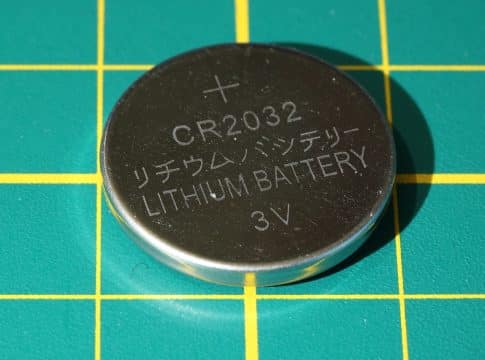Lithium Prices Hit New Lows: Can the Market Survive the EV Slowdown and Price Plunge?
The lithium market continues to face significant challenges as detailed in the S&P Global Commodity Insights report for August 2024. The report highlights the intricate interplay between global macroeconomic trends, shifting demand patterns in the electric vehicle (EV) sector, and the corresponding impacts on the supply and pricing of this critical battery metal.
Global EV Market Slows as Consumer Confidence Wanes
The global market for plug-in electric vehicles (PEVs) is experiencing notable fluctuations, with a 2.2% decrease in sales across major markets in July 2024 per S&P Global data. This decline is driven by several factors, including:
weakening consumer confidence,
a seasonal demand lull in the Northern Hemisphere, and
the imposition of higher tariffs, particularly in the European market where sales fell by a steep 29.9%.
The European market’s downturn is reflective of broader macroeconomic uncertainties, including concerns about the U.S. economy potentially slipping into recession and persistent sluggishness in China’s economy.
A MESSAGE FROM Li-FT POWER LTD.
This content was reviewed and approved by Li-FT Power Ltd. and is being disseminated on behalf of CarbonCredits.com.
Lithium Deposits That Can Be Seen From The Sky
Why Li-FT Power? One of the fastest developing North American lithium juniors is Li-FT Power Ltd (TXSV: LIFT | OTCQX: LIFFF | FRA: WS0) with a flagship Yellowknife Lithium project located in the Northwest Territories. Three reasons to consider Li-FT Power:
RESOURCE POTENTIAL | EXPEDITED STRATEGY | INFRASTRUCTURE
China, however, remains a dominant force in the PEV market. PEVs accounted for 51.1% of all new car sales in July in the country, marking a record penetration rate. Yet, this growth is not without its challenges.
The PEV market in China is becoming less battery-metals intensive as the share of battery electric vehicles (BEVs) within the sales mix declines.
BEVs, which use larger batteries and therefore consume more metals, made up only 54.9% of China’s PEV sales in July, down from 67.4% a year earlier. Additionally, China’s PEV market growth is increasingly coming at the expense of margins. Chinese automakers are engaging in fierce price competition to maintain market share amid weak domestic demand and low consumer confidence.
EV Battery Blues
The global slowdown in PEV uptake has had significant repercussions for the battery production sector. This leads to the cancellation of several high-profile projects in the U.S. and Europe.
Notably, General Motors Co. has suspended construction of its third battery plant in Michigan, a collaboration with LG Energy Solution Ltd., while Umicore SA has halted construction of a battery materials plant in Ontario and postponed investments in battery recycling plants in Europe. Umicore cited delays in the ramp-up of customer contracted volumes, which have been pushed back by at least 18 months.
The imposition of higher tariffs in various regions has further complicated the global PEV market outlook. The EU and U.S. tariffs, intended to encourage local production and reduce dependence on Chinese BEV imports, have dampened short-term sales potential and added to the costs passed on to consumers.
RELATED NEWS: U.S. Raises Tariffs on $8B China Imports: EVs, Batteries, and Solar Cells Included
China’s BEV exports have also been affected, declining for a second consecutive month in June 2024, with a 29.1% drop month-over-month. The European Commission’s recent adjustment of the top-line tariff rate from 48.1% to 46.3%, along with a reduction in Tesla’s tariff rate from 30.8% to 19%, highlights the ongoing uncertainties surrounding trade policies and their impact on the market.
Supply Cutbacks Sweep the Market as Lithium Prices Plummet
With this slowing trend in plug-in EVs, the lithium market is also facing renewed supply challenges as prices continue to drop. The Platts-assessed spodumene concentrate FOB Australia price plummeted by 15.6% in August, reaching $760 per metric ton, the lowest level since June 2021.
This significant lithium price drop has led to a wave of supply curtailments, as producers struggle to maintain profitability. For instance, Albemarle Corp. announced it would only operate one of its two lithium hydroxide processing lines at its Kemerton refinery in Australia, effectively removing 22,000 metric tons of lithium carbonate equivalent capacity from the market. The company also halted work on expanding its production capabilities, deferring investments in new projects in Canada and Argentina.
COMPANY SPOTLIGHT: The Fastest Developing North American Lithium Junior (Li-FT Power)
The decline in lithium prices is being driven by a combination of factors, including growing demand headwinds and a persistent market surplus. Despite relatively mild supply cuts in the March quarter, ongoing project ramp-ups, particularly by emerging suppliers in Zimbabwe, Argentina, and Brazil, have contributed to the oversupply.
July export data from major lithium-producing countries indicates a month-over-month drop in seaborne lithium and cobalt supply as producers respond to the market surplus.
The lithium carbonate CIF Asia price also fell by 9.8% in August, reaching $11,000 per metric ton, the lowest level since April 2021. At these price levels, many lithium producers are likely to reduce their output, as it becomes economically unviable to continue production.
Merchant lithium carbonate refineries, in particular, are expected to scale back their operations due to the negative margins in August, a sharp contrast to the small positive margins seen in July.
S&P Global Lithium Price Forecast
With lithium and cobalt prices hitting new multi year lows in August, S&P Global Commodity insights have revised its 2024 price forecasts downward. The forecast for lithium carbonate CIF Asia has been reduced by 1.1% to $12,627 per metric ton. This reflects the ongoing challenges in the market, including a persistent oversupply and weak demand.
These price adjustments underscore the significant pressures facing the lithium and other electric metal markets, where producers are grappling with reduced profitability and market uncertainties. The downgrades reflect a cautious outlook for these critical battery metals as the industry navigates a complex economic environment.
READ MORE: Is Direct Lithium Extraction the Key to Solving the Lithium Shortage Crisis?
The post Lithium Prices Hit New Lows: Can the Market Survive the EV Slowdown and Price Plunge? appeared first on Carbon Credits.



